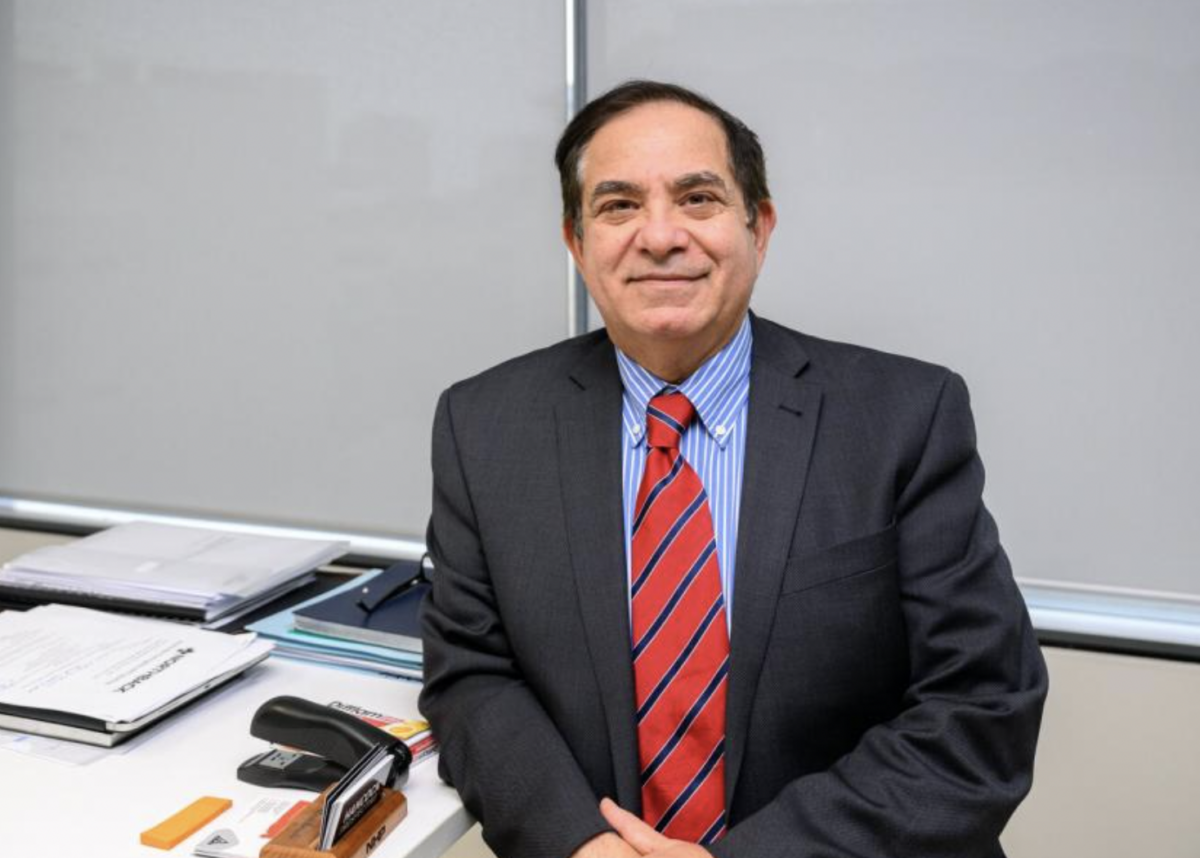Hancock integrates project plans
GINA Rinehart’s Hancock Prospecting has been quietly implementing changes this year that will reshape the way it operates. One key development was the acquisition of properties in West Perth so that staff at subsidiaries Roy Hill Holdings and Atlas Iron can be co-located with the parent company. Another key development was the creation of HanRoy, a new entity to coordinate the evaluation of all projects. Led by chief executive group projects Sanjiv Manchanda, HanRoy is currently working on more than half a dozen mining and infrastructure projects. At the same time, Gerhard Veldsman was put in charge of all mining operations, with both men reporting to Hancock chief executive Garry Korte.


Article by Mark Beyer courtesy of Business News.
Hancock Prospecting is pursuing multiple projects under a new, integrated structure, but faces numerous obstacles.’
GINA Rinehart’s Hancock Prospecting has been quietly implementing changes this year that will reshape the way it operates.
One key development was the acquisition of properties in West Perth so that staff at subsidiaries Roy Hill Holdings and Atlas Iron can be co-located with the parent company.
This will include shifting Roy Hill’s remote operations centre from Perth Airport to 53 Ord Street, once the building fit-out has been completed.
Another key development was the creation of HanRoy, a new entity to coordinate the evaluation of all projects.
Led by chief executive group projects Sanjiv Manchanda, HanRoy is currently working on more than half a dozen mining and infrastructure projects.
At the same time, Gerhard Veldsman was put in charge of all mining operations, with both men reporting to Hancock chief executive Garry Korte.
Together, these changes are designed to break down the siloes that had developed across the three group companies and instil a more integrated approach.
In his new role, which started early this year, Mr Manchanda describes HanRoy as effectively a service provider to the wider group.
He has a team of more than 250 people and plenty of financial firepower to draw on, as Hancock Prospecting posted a net profit of $5.8 billion in the year to June 2022.
His team is midway through developing the McPhee Creek mine, budgeted to cost $605 million and designed to produce nearly 10 million tonnes of iron ore per year.
It is also progressing studies on Mulga Downs, which is targeted to produce 20mt of iron ore over a 30-year mine life.
A third mine project is more ambitious. Ridley has been earmarked as Hancock’s first magnetite project, which involves the processing of low-grade ore into a high-grade concentrate.
Mr Manchanda said Mulga Downs and Ridley were proceeding concurrently.
“Ridley is progressing in parallel with a similar intensity to get to a final investment decision towards the end of the year or early next year,” he said.
HanRoy is also working on development of the Mulga Downs hub, which will receive up to 40mt of ore per year from multiple mines.
The ore will be transported on a new 70-kilometre rail spur to Roy Hill’s existing rail line, which will be upgraded to handle the extra volumes.
At Port Hedland, the group is pursuing the development of a new shipping berth in joint venture with Chris Ellison’s Mineral Resources.
On all these projects, Mr Manchanda is facing potential delays because of operational and regulatory issues.
At McPhee Creek, for instance, the project is nearly 50 per cent progressed, with most of the engineering work completed and equipment ordered.
Yet Hancock is still awaiting environmental approval to start on-site construction, which puts its target date for first exports at risk.
“Our target date is the end of next year but that is subject to getting timely approvals,” Mr Manchanda said.
“At the moment that is under risk, because there are delays in getting regulatory approvals on all fronts.
“We have had assurances but my gut feel is that there will be delays.”
It’s a similar story when he talks about the proposed new berth at Port Hedland.
“The thing driving the timing on Stanley Point is again regulatory approvals, and it’s the agreement with traditional owners to do the rail upgrades and the mine development,” Mr Manchanda told Business News.
“That is constraining us from making a final investment decision.”
Heritage laws
Mr Manchanda believes the state government’s new Aboriginal cultural heritage laws have added to the regulatory challenges.
“People are just holding back from making decisions, waiting to see what happens, and that is contributing to the delays,” he said.
“I don’t want to blame anyone, but the uncertainty is creating an environment where people are just waiting for someone else to do something first.”
Mr Manchanda said all parties, from government agencies to Aboriginal groups, were already stretched and the new laws would add to the task.
“The Aboriginal groups are waiting for legal updates, for their own directors to get up to speed with the new legislation,” he said.
“You also need to understand there are a limited number of people who can evaluate sites of cultural significance.
“How are they going to cope with this increased workload?
“I can size my team up and down but I still need to get time in their diary.
“From their perspective, I’m not the only proponent developing a mine or a port or rail on their land.
“They can’t give all their time to me.” Mr Manchanda said the impact on risk assessments was significant.
“Technical information is probably the most certain thing these days,” he said.
“It’s the regulatory and operating environment that is uncertain.
“It’s almost gone the reverse from a couple of years ago.”
Magnetite
Having said that, he acknowledges his team is deep in the evaluation of Ridley, seeking to avoid the technical problems that have plagued every other magnetite project in Western Australia: from Sino Iron and Karara Mining to Fortescue Metals Group’s Iron Bridge.
“We have put in a lot of effort in doing the work on Ridley to make sure we don’t repeat the same mistakes,” Mr Manchanda said.
His team started by reviewing the original pre-feasibility study undertaken by Atlas Iron in 2011.
“We revisited the PFS to apply all those learnings from other projects to ask if it is still viable,” Mr Manchanda said.
“That was our first screening exercise, to apply those lessons on Ridley to prove its commercial viability.
“It stacked up and that’s when we committed [in March 2022] to doing a full feasibility study and take it to an investment case.”
Hancock is planning to start small, with one processing train with a capacity of 3mt to 4mtpa.
If all goes well, capacity will expand to 16.5mtpa.
“Ultimately the plant will have five [processing] trains, but we are going to build one train, de-risk it and then commit to the other trains,” Mr Manchanda said.
“We don’t want to not de-risk it and get it wrong.”
He believes HanRoy is approaching Ridley with an honest understanding of what’s involved.
For instance, magnetite projects are high users of energy and water.
“Thirty to forty per cent of your operating cost is energy, so getting a good energy solution and getting an adequate water supply become key cost drivers,” Mr Manchanda said.
Like most other iron ore miners, Hancock’s energy solution will be a mix of renewables and gas, helped by the company’s purchase of Perth Basin gas company Warrego Energy.
Mr Manchanda also recognises that magnetite ore in WA is much harder than jurisdictions such as China and SA, which means the project will be a bigger user of things such as blasting explosives and excavator teeth.
“The learnings are that people have gone and committed to some of those projects without even doing the test work on hardness and abrasion,” he said.
“Made assumptions, get it wrong, don’t get the ramp up, and then time catches up. Time is money.
“But if you can get these things right from day one, and not waste time in fixing them, you mitigate your risks.
“You are also more realistic in what your costs are going to be.”
Exploration
HanRoy’s activities include extensive exploration programs. One of the most notable is a joint venture with ASX companies Legacy Iron and Hawthorn Resources.
Their Mt Bevan joint venture has been evaluating development of a second magnetite project in the Mid West, with a pre-feasibility study under way.
The JV was expanded last month when Hancock agreed to fund exploration of other commodities.
While the main focus is lithium, Hancock and the JV have an appetite for other future metals such as nickel and copper.
“There has been limited exploration work on those commodities, so we will do the exploration work before we do any plant studies,” Mr Manchanda said.
“This work will draw on the significant expertise that is now being assembled at HanRoy, which has a mandate to lead the study, design, and development of a globally significant pipeline of projects.”
Mr Manchanda said while certain kinds of rigs remained in short supply, a lot of heat had come out of the exploration market.
“Two years ago, you could not get a drill rig, but rigs have become available and geologists are more available,” he said.
